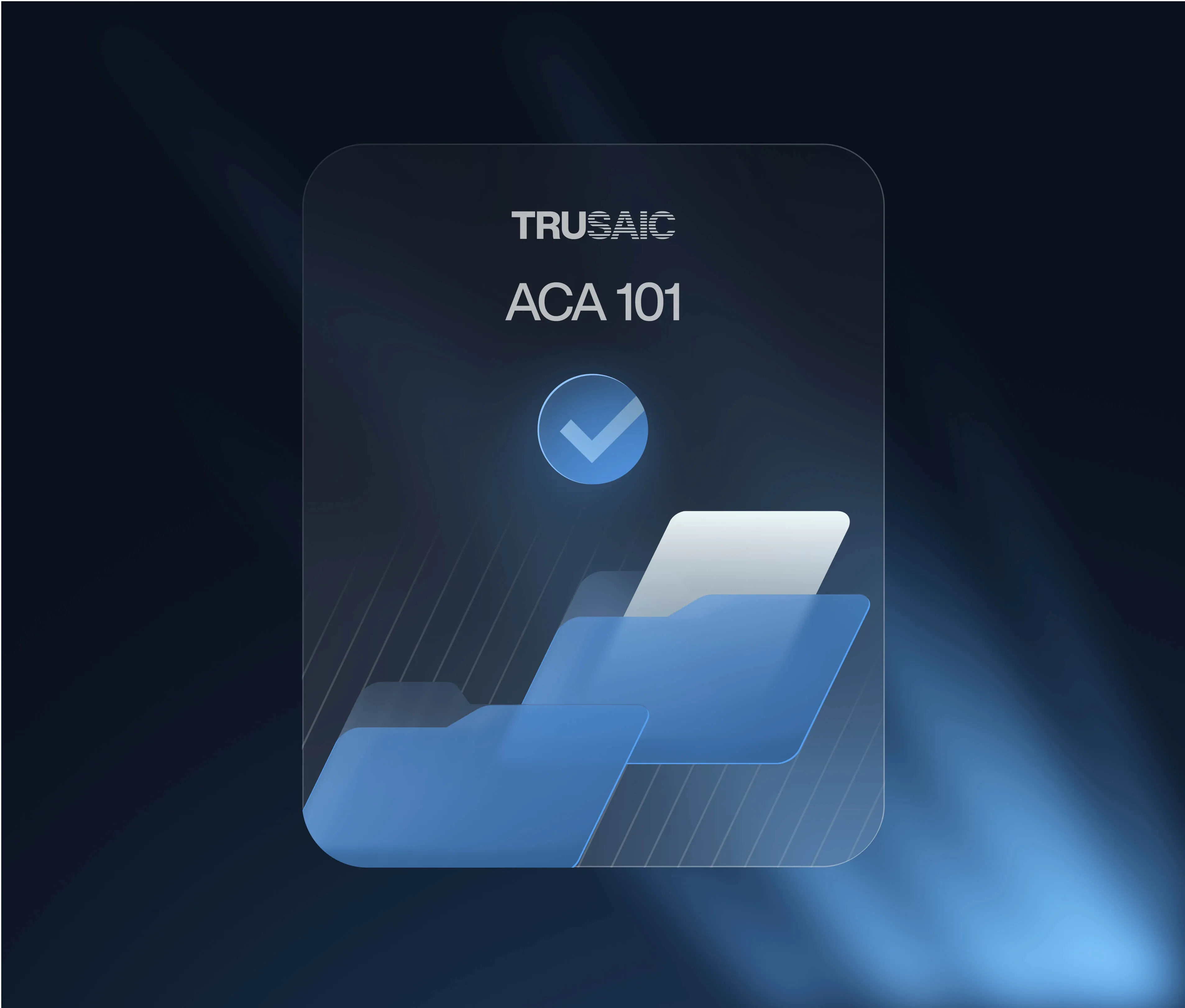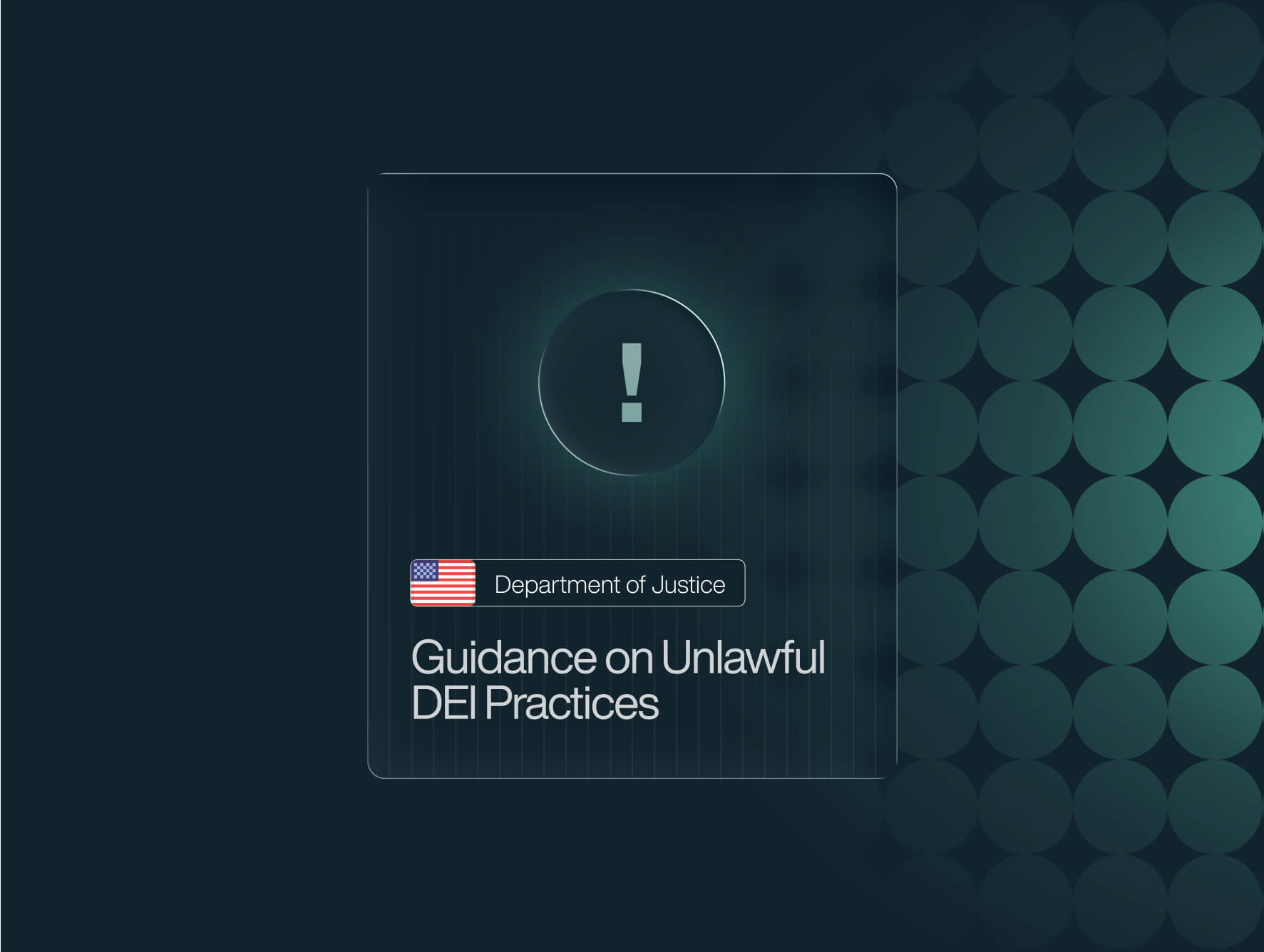The U.S. Department of Justice (DOJ) has released new guidance that could significantly impact diversity, equity, inclusion, and accessibility (DEI/DEIA) programs for entities receiving federal funding — and, by extension, for many private employers.
On July 29, 2025, DOJ issued a memorandum titled “Guidance for Recipients of Federal Funding Regarding Unlawful Discrimination.” This memo broadens the Trump Administration’s stance on DEI initiatives, signaling that certain practices long considered standard in corporate DEI may now be viewed as unlawful discrimination under federal law.
Key Takeaways from the DOJ Guidance
The DOJ’s memo underscores that federal law prohibits discrimination based on protected characteristics, including race, sex, color, national origin, and religion. Importantly, the use of DEI or “equity” language does not excuse discriminatory practices.
According to the guidance, the following practices could be unlawful for federally funded entities and, in some cases, for private-sector employers:
- Race-based or sex-based preferences
- Hiring, promotion, internship, or scholarship programs that prioritize underrepresented groups over other qualified candidates.
- “Diverse slate” policies requiring specific demographic representation in candidate pools.
- Use of proxies for protected characteristics
- Cultural competence or lived experience requirements designed or applied to favor candidates of certain races or backgrounds.
- Geographic or institutional targeting aimed primarily at schools or regions with specific demographic makeups.
- Diversity statements that effectively advantage candidates tied to protected characteristics.
- Segregated or preferential programs
- Safe spaces or lounges designated exclusively for specific racial or ethnic groups.
- Race-based training sessions or workshops requiring participants to separate into identity-based groups.
- Implicit segregation in eligibility requirements for programs, scholarships, or internships.
- Potentially unlawful DEI trainings
- Programs that stereotype, exclude, or demean individuals based on protected traits.
- For example, trainings that assert “all white people are inherently privileged” or use similar blanket statements.
The DOJ memo also highlights that federally funded entities can be held liable for discrimination by third-party programs they support with federal dollars.
Best Practice Recommendations from DOJ
While the memo does not carry the force of law, it includes non-binding recommendations to reduce legal risk:
- Focus hiring, promotion, and program eligibility on skills and objective qualifications, not demographics.
- Eliminate diversity quotas and avoid demographic-driven selection criteria.
- Scrutinize facially neutral criteria to ensure they are not intended as proxies for protected traits.
- Include nondiscrimination clauses in contracts with third-party providers and monitor compliance.
- Maintain anti-retaliation protections for employees who oppose or decline participation in potentially discriminatory DEI initiatives.
For federal contractors, this memo builds on earlier executive actions, including Executive Order 14173, which revoked race- and gender-based affirmative action requirements under Executive Order 11246.
Implications for Employers
This guidance underscores a shift from broad-based DEI programming toward merit-based decision-making in hiring, promotion, pay, and program participation. For employers, this creates both legal risk and strategic opportunity:
- Audit Your DEI Programs
- Review all programs for potentially discriminatory eligibility criteria.
- Ensure trainings and resources do not segregate, stereotype, or prioritize based on protected traits.
- Refocus on Merit-Based Pay and Employment Practices
- Link hiring, promotion, and pay decisions to objective, documented criteria like qualifications, performance, and responsibilities.
- Ensure compensation practices comply with Title VII, Title IX, and related federal statutes.
- Align DEI with Legally Defensible Pay Equity
- Rather than relying on demographic targets, adopt data-driven pay equity analyses to identify and address disparities.
- Trusaic’s PayParity® solution enables intersectional, regression-based analyses that are legally defensible and unbiased, helping organizations advance equity without violating antidiscrimination laws.
- Prepare for Increased Scrutiny
- DOJ’s position indicates aggressive investigative and enforcement priorities.
- Contractors and federally funded organizations should anticipate grant funding risk and potential audits if DEI programs remain misaligned.
Why Pay Equity Remains a Business Imperative
Despite political shifts, pay equity should remain a top priority for organizations for legal, ethical, and operational reasons.
1. Compliance and Legal Risk Mitigation
The increase in state-level enforcement and private litigation means that employers must take a proactive stance on pay equity. Government agencies and plaintiffs’ attorneys continue to scrutinize pay practices, leading to costly settlements and reputational damage for organizations that fail to address inequities.
2. Merit and Compliance Go Hand in Hand
The administration’s focus on “merit” as a guiding principle reinforces the need for data-driven pay equity analyses. A well-executed pay equity analysis ensures that all employees are compensated based on legitimate Wage Influencing Factors (WIF) — such as skills, experience, and job responsibilities — rather than unconscious biases or systemic inequities.
3. The Business Case for Pay Equity
Companies that proactively address pay equity enjoy significant business benefits, including:
- Enhanced employee trust and retention. Transparent and unbiased pay practices reduce turnover and improve employee morale.
- Stronger employer brand. Today’s job seekers expect employers to prioritize unbiased pay practices, making pay equity a competitive differentiator.
- Reduced legal exposure. A robust pay equity strategy helps employers stay ahead of regulatory risks and costly litigation.
Best Practices for Pay Equity Compliance
To navigate the evolving pay equity landscape, organizations should adopt a neutral, systematic approach to pay equity analysis. Trusaic recommends the following key practices:
1. Use a Neutral-Based Pay Equity Analysis
Traditional pay equity studies often compare employee earnings against a predefined reference group—typically white males. However, this approach may fail to detect disparities affecting other demographic groups.
Instead, a neutral analysis method ensures that disparities are identified without assumptions about which group is disadvantaged. Our pay equity software solution PayParity® automatically determines the highest-paid demographic group within each pay analysis category, ensuring an objective and compliant evaluation.
By eliminating bias in the selection of reference groups, employers can accurately identify and address pay disparities across all protected classes — reducing risks of both systemic discrimination and potential reverse discrimination claims.
2. Ensure Hiring and Pay Decisions Are Free from Bias
Employers must take steps to remove bias from compensation decisions, particularly at the point of hire. Some common pitfalls to avoid include:
- Using gender or race as a factor in determining salary offers.
- Adjusting pay based on a candidate’s prior salary history (which is prohibited in many states).
- Failing to conduct pay equity reviews before setting salary bands.
To support compliant hiring practices, Trusaic’s Salary Range Finder® ensures that compensation decisions are based solely on job-related criteria — without incorporating gender, race, or other protected characteristics. This approach not only ensures compliance but also promotes competitive pay structures that align with industry benchmarks.
How Trusaic Can Help
While federal DEI policies may fluctuate with political changes, pay equity remains a legal, ethical, and business imperative. Employers must continue prioritizing pay equity efforts by:
- Conducting regular pay equity analyses using neutral-based methodologies.
- Ensuring compliance with state-level pay laws, which remain unaffected by federal executive orders.
- Eliminating bias in compensation decisions, particularly at the point of hire.
Trusaic’s PayParity® solution is designed to help organizations navigate these complexities with confidence — providing sophisticated analytics, unbiased insights, and legally compliant methodologies to ensure anti-discriminatory compensation practices.
Learn more about how we are guiding global enterprises to make clear, compliant pay decisions with ease.








